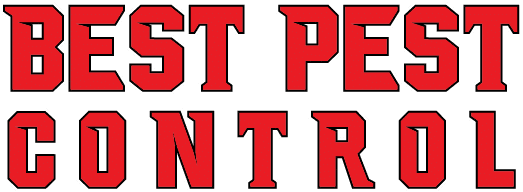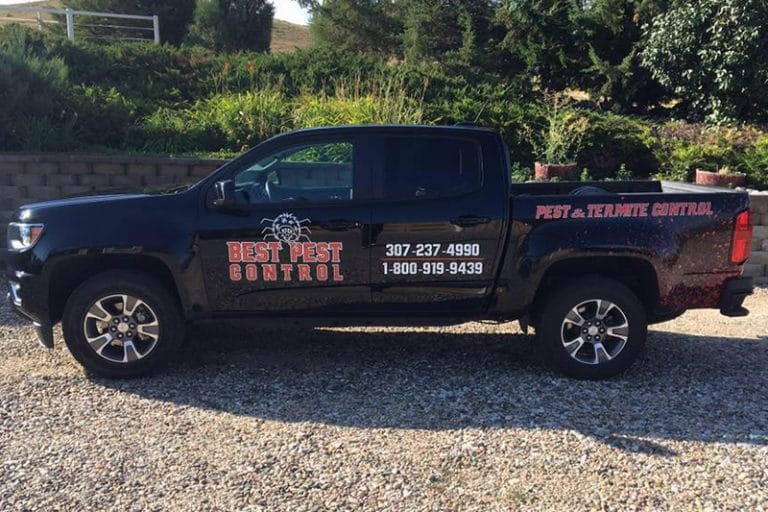Winter gives pests plenty of quiet time to tuck into walls, crawlspaces, and wood piles. When the thaw hits Missoula, they get busy. We put this Spring Pest Inspection Checklist for Missoula Homes together to help you spot problems early, shore up weak points, and know when it’s time to bring in backup. As your local team at Best Pest Control Missoula, we’re here if you want a professional set of eyes or a full treatment plan.
Key Takeaways
- After Missoula’s thaw, use the Spring Pest Inspection Checklist for Missoula Homes to start outside—seal foundation and utility gaps, repair screens, and check eaves and soffits for early wasp nests.
- Lower pest pressure by managing habitat: store firewood high and 20 ft from the house, keep mulch low with exposed foundation, trim vegetation, clean gutters, and dump standing water.
- Inside, fix leaks and humidity, store food in airtight containers, clean under appliances, and tighten door and garage seals to deter ants, rodents, and spiders.
- Lead with exclusion, then apply low-toxicity controls like baits, traps, and targeted dusts or gels while following pollinator- and pet-safe timing and practices.
- Call a pro if you find mud tubes, soft or hollow wood, recurring rodent signs, or risky nest locations; Best Pest Control Missoula can verify carpenter ants vs. termites and provide reports and warranties.
Why Spring Pest Checks Matter in Missoula
Snowmelt, Thaw, and Rising Pest Activity
Missoula’s freeze-thaw cycle shifts soil, opens new gaps, and sends moisture against foundations. As snowmelt saturates the ground, ants, spiders, and rodents move to drier, warmer spaces. Inside, heating systems and stored winter food can look like a welcome sign. A quick spring walkaround helps catch activity before pests establish nests or colonies.
Common Local Pests: Carpenter Ants, Rodents, Wasps, Boxelder Bugs, and Spiders
- Carpenter ants target damp or decaying wood and can tunnel through studs and trim.
- Rodents squeeze through gaps as small as a dime, chew wiring, and contaminate surfaces.
- Paper wasps and yellowjackets start new nests in eaves, attics, and sheds.
- Boxelder bugs cluster on sunny siding and slip indoors through tiny cracks.
- Spiders follow prey insects: seeing more spiders often means other bugs are present.
From our on-the-ground work at Best Pest Control Missoula, spring also marks rise-and-repeat issues with termites where wood meets soil. If you notice mud tubes or soft wood, call us fast.
Health, Structural, and Fire Risks To Consider
Pests aren’t just annoying. Rodents can carry pathogens and trigger asthma. Carpenter ants and termites weaken structural wood. Chewed wires increase fire risk. And wasps near doors or play areas are a stinging hazard. A thorough spring check lowers those risks right away.
Exterior, Roof, and Attic Inspection
Start with the outside, then work up to the roof and in toward the attic. Keep your phone handy to snap photos and notes. This is the core of any Spring Pest Inspection Checklist for Missoula Homes.
Foundation, Crawlspace Vents, and Gaps at Utility Lines
- Look for cracks and mortar gaps along the foundation.
- Confirm crawlspace vents are screened and intact.
- Seal gaps where cables, gas lines, or AC lines enter. Expanding foam and pest-proof mesh are your friends.
Siding, Trim, and Wood-To-Soil Contact
- Probe any soft or discolored trim with a screwdriver. Crumbly or hollow pockets suggest moisture damage and possible insect galleries.
- Lift mulch away from siding. Keep at least 4 to 6 inches of exposed foundation.
- Avoid direct wood-to-soil contact on steps, skirting, or stacked boards.
Doors, Windows, Screens, and Weatherstripping
- Replace torn screens and tighten frames.
- Check daylight around door bottoms. Install or replace door sweeps.
- Refresh brittle or gapped weatherstripping to shut common entry points.
Rooflines, Eaves, Soffits, and Attic Access
- Look for wasp paper combs beginning under eaves.
- Check fascia and soffits for gaps or rot that could invite rodents and birds.
- Ensure attic access panels close snugly and are properly insulated.
Chimneys, Flues, and Exhaust Vents
- Secure chimney caps and screens.
- Inspect dryer and bath vents for broken louvers and lint buildup.
- Clear bird nests and block re-entry with proper screening.
Yard and Perimeter Habitat Management
Good habitat management reduces the pest pressure on your home. Think of it as a buffer zone that makes your place less appealing.
Firewood, Mulch, and Landscaping Clearance
- Store firewood 20 feet or more from the house, stacked on a rack at least 6 inches off the ground.
- Go light on mulch near the foundation and consider rock borders in problem areas.
- Trim shrubs so branches don’t touch siding or rooflines.
Drainage, Gutters, and Standing Water
- Clean gutters and downspouts after the last big thaw.
- Extend downspouts to move water away from the foundation.
- Dump standing water in buckets, planters, or toys to cut mosquito breeding.
Fences, Sheds, Compost, and Trash Storage
- Seal shed gaps at grade where voles and mice sneak in.
- Use tight-fitting lids on trash and keep bins cleaned.
- Turn compost regularly and avoid meat or oily scraps that draw pests.
Interior Inspection: Kitchen, Baths, Basement, and Garage
Move room to room slowly, looking high and low. A flashlight and a hand mirror help you see under appliances and behind pipes.
Moisture Sources, Leaks, and Ventilation
- Tighten weeping valves and fix slow drains.
- Run bath fans long enough to clear humidity.
- Use a dehumidifier in basements that creep above 50 percent humidity.
Food Storage, Crumbs, and Pet Feeding Areas
- Store pantry items in airtight containers. Paper and thin plastic are easy to chew.
- Vacuum crumbs and grease under ranges and fridges.
- Pick up pet food overnight and wipe bowls daily to avoid ant trails.
Basement and Garage: Clutter, Insulation, and Door Seals
- Reduce cardboard storage, which attracts roaches and absorbs moisture.
- Inspect insulation for tunneling or nests.
- Check garage door seals along the sides and bottom. Look for daylight.
What To Log: Droppings, Frass, Wings, Odors, and Noises
- Note rodent droppings, insect frass, or scattered wings near windows.
- Musty or sweet odors can suggest hidden activity.
- Scratching at night in walls or ceilings points to rodents or raccoons. Log dates and locations so patterns are clear if treatment is needed.
Prevention and Treatment Priorities for Spring
Exclusion First: Sealing, Screening, and Repairs
We always start with exclusion. It’s the most cost-effective step and prevents reinfestation. Seal openings, repair screens, replace weatherstripping, and fix moisture problems. Many pest issues fade once the home is tight and dry.
Low-Toxicity Controls: Baits, Traps, and Targeted Applications
When controls are needed, choose the least intrusive option that works:
- Ant and roach baits placed near trails
- Snap traps or sealed stations for rodents
- Targeted dusts or gels in inaccessible voids
At Best Pest Control Missoula, our green approach includes chemical-free deterrents, non-toxic baits and traps, and organic options. For bed bugs, we offer heat and Cryonite treatments that kill bugs and eggs without chemical residues.
Pollinator- and Pet-Safe Practices
- Treat in the early morning or evening when pollinators are less active.
- Avoid broad, broadcast sprays. Target nests, cracks, and crevices.
- Keep pets out of treated areas until products are dry or as labeled.
Seasonal Maintenance Calendar for Missoula
- Early spring: Full exterior inspection, seal gaps, clear gutters, reduce mulch, and set monitors.
- Mid to late spring: Check for wasp nests, refresh door sweeps, and recheck any past hot spots.
- Early summer: Quick follow-up walkaround and adjust baits or traps as needed.
When To Call a Local Professional
Some situations need a pro. If you uncover widespread damage, ongoing activity, or a risky nest location, give us a shout.
Confirming Carpenter Ants Versus Termites
Carpenter ants excavate smooth galleries and push out sawdust-like frass. Termites consume wood and leave mud tubes. Because termites can cause costly structural damage, a fast, accurate ID is essential. We diagnose on site and explain findings in plain language.
Active Nests, Recurring Infestations, or Structural Concerns
- Wasps or hornets near entryways and play areas
- Rodent activity that returns after trapping
- Soft floors, swollen trim, or mud tubes on foundations
- Bed bug bites or live sightings, especially after travel
Our team at Best Pest Control Missoula provides thorough inspections, targeted treatments, and options that fit your property and comfort level.
Warranties, Inspection Reports, and Real Estate Needs
Buying or selling? Ask us for an inspection report and treatment records. We also offer warranties on many services so you have peace of mind long after the visit. For properties across Montana, we can coordinate ongoing plans that prevent reinfestation and protect value.
Conclusion
A careful spring check takes an hour or two and can save you thousands in repairs. Tighten the envelope, control moisture, and monitor hot spots. Use this Spring Pest Inspection Checklist for Missoula Homes each year to stay ahead of ants, rodents, wasps, and more. If you want help, we’re ready. Best Pest Control Missoula serves homeowners and businesses with inspections, chemical-free options, and proven treatments that fit local conditions. Call or contact us today to book your spring inspection and keep pests out for good.
Frequently Asked Questions
What does the Spring Pest Inspection Checklist for Missoula Homes include?
Start outside and move inward. Check foundations for cracks, screen crawlspace vents, seal utility gaps, and keep mulch 4–6 inches below siding. Inspect eaves for wasp starts, secure chimney caps, clean gutters, and manage standing water. Indoors, fix leaks, dehumidify basements, seal doors, and log droppings, frass, wings, or noises.
Why do pests surge after snowmelt around Missoula homes?
Freeze–thaw cycles shift soil and open gaps while snowmelt drives moisture against foundations. Ants, rodents, spiders, and boxelder bugs head for drier, warmer interiors—especially where heating, stored foods, or soft, damp wood are present. A spring pest inspection in Missoula helps catch nests and colonies before they establish.
How can I tell carpenter ants from termites during spring inspections?
Carpenter ants excavate smooth, clean galleries and push out sawdust-like frass; they don’t eat wood. Termites consume wood, often leaving mud tubes on foundations and causing soft or hollow spots. Because termite damage escalates quickly, call a local pro for fast identification if you see mud tubes or spongy wood.
When is the best time to use the Spring Pest Inspection Checklist for Missoula Homes?
Aim for early spring after the last hard freeze, then recheck mid to late spring for new wasp nests or reopened gaps. Do a quick early-summer follow-up to adjust baits or traps. Morning light helps spot entry points, while evening checks reveal wasp activity and rodent signs.
How much does a spring pest inspection in Missoula cost, and how long does it take?
General residential inspections typically run about $100–$200 in many Montana markets, depending on home size and issues found. Plan 60–90 minutes for a thorough walk-through; add time if attic, crawlspace, or moisture-mapping is needed. Written findings or real estate reports may carry an additional fee.


Recent Comments